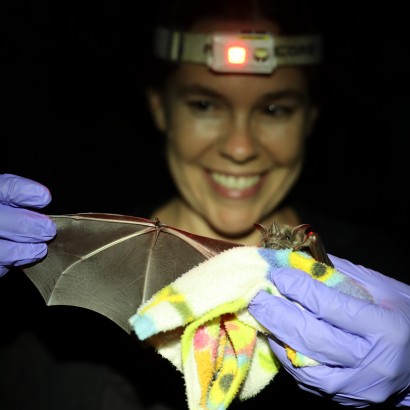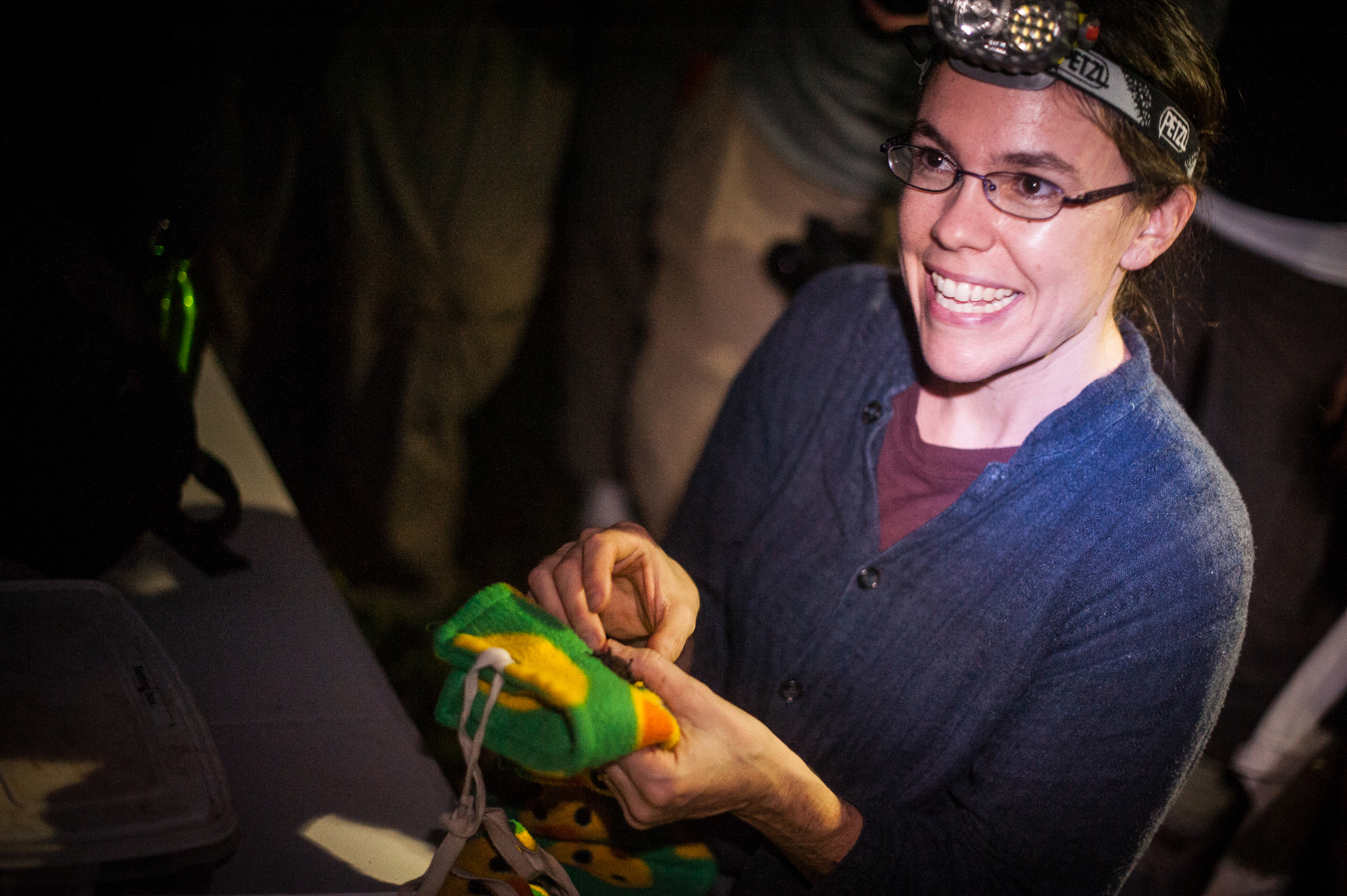Dixon MM, Jones PL, Ryan MJ, Carter GG, Page RA. 2022. Long-term memory in frog-eating bats. Current Biology. 32, R557-R558. doi: 10.1016/j.cub.2022.05.031.
Bernal XE, Page RA. 2022. Tactics of evasion: strategies used by signallers to deter eavesdropping enemies from exploiting communication systems. Biological Reviews. doi: 10.1111/brv.12904.
Page RA, ter Hofstede HM. 2021. Sensory and cognitive ecology of bats. Annual Review of Ecology, Evolution, and Systematics. 52: 541-562. doi: 10.1146/annurev-ecolsys-012921-052635.
Geipel I, Lattenkamp EZ, Dixon MM, Wiegrebe L, Page RA. 2021. Hearing sensitivity: an underlying mechanism for niche differentiation in gleaning bats. Proceedings of the National Academy of Sciences. 118: e2024943118.
Muñoz-Romo M, Page RA, Kunz TH. Redefining the study of sexual dimorphism in bats: following the odor trail. Mammal Review. doi: 10.1007/s00265-020-02914-0.
Page RA, Bernal XE. 2020. The challenge of detecting prey: Private and social information use in predatory bats. Functional Ecology. 34: 344-363. doi: 10.1111/1365-2435.13439.
Page, RA, Jones, PL. 2017. Overcoming sensory uncertainty: factors affecting foraging decisions in frog-eating bats. In: Perception and Cognition in Animal Communication (volume editors, MA Bee and CT Miller), in the book series Animal Signals and Communication (series editors: P.K. McGregor and V.M. Janik). Springer. pp 285-312.
Gomes, DGE, Page, RA, Geipel, I, Taylor, RC, Ryan, MJ, Halfwerk W. 2016. Bats perceptually weight prey cues across sensory systems when hunting in noise. Science. 353: 1277-1280. DOI 10.1126/science.aaf7934.
Jones, PL, Page, RA, Ratcliffe, JM. 2016. To scream or to listen? Prey detection and discrimination in animal-eating bats. In: Bat Bioacoustics (volume editors: B. Fenton and A. Grinnell; series editor: A. Popper). Springer. pp. 93-116.
Ramakers JJC, Dechmann DKN, Page RA, O’Mara MT. 2016. Frugivorous bats prefer information from novel social partners. Animal Behaviour. 116: 83-87.
Falk, JJ, ter Hofstede, HM, Jones, PL, Dixon, MM, Faure, PA, Kalko, EKV, Page, RA. 2015. Sensory-based niche partitioning in a multiple predator-multiple prey community. Proceedings of the Royal Society Series B. 282: 20150520. http://dx.doi.org/10.1098/rspb.2015.0520.
Fugère, V, O'Mara, MT, Page, RA. 2015. Perceptual bias does not explain preference for prey call adornment in the frog-eating bat. Behavioral Ecology and Sociobiology. DOI 10.1007/s00265-015-1949-2.
Rhebergen, F, Taylor, RC, Ryan, MJ, Page, RA, Halfwerk, W. 2015. Multimodal cues improve prey localisation under complex environmental conditions. Proceedings of the Royal Society Series B. 282: 20151403. http://dx.doi.org/10.1098/rspb.2015.1403.
Jones, PL, Ryan, MJ, Page, RA. 2014. Population and seasonal variation in response to prey calls by an eavesdropping bat. Behavioral Ecology and Sociobiology. DOI 10.1007/s00265-013-1675-6.
Clarin, TMA, Borissov, I, Page, RA, Ratcliffe, JM, Siemers, BM. 2014. Social learning within and across species: information transfer in mouse-eared bats. Canadian Journal of Zoology. 129-139. DOI 10.1139/cjz-2013-0211.
Halfwerk, W, Jones, PL, Taylor, RC, Ryan, MJ, Page, RA. 2014. Risky ripples allow bats and frogs to eavesdrop on a multisensory sexual display. Science. 342: 413-416, DOI 10.1126/science.1244812.
Page, RA, Ryan, MJ, Bernal, XE. 2014. Be loved, be prey, be eaten. In: Animal Behavior, vol 3. Case Studies: Integration and Application of Animal Behavior (ed., K. Yasukawa), New York: Praeger. pp. 123-154.
Jones, PL, Ryan, MJ, Page, RA. 2013. When to approach novel prey cues? Social learning strategies in frog-eating bats. Proceedings of the Royal Society Series B. 280.
Page, RA, Schnelle, T, Kalko, EKV, Bunge, T, Bernal, X.E. 2012. Reassessment of prey through sequential use of multiple sensory cues by an eavesdropping bat. Naturwissenschaften 99: 505-509.
Akre, KL, Farris, HE, Lea, AM, Page, RA, Ryan, MJ. 2011. Signal perception in frogs and bats and the evolution of mating signals. Science 333: 751-752.
Page, RA, Ryan, MJ. 2008. The effect of signal complexity on localization performance in bats that localize frog calls. Animal Behaviour 76: 761-769.
Page, RA, Ryan, MJ. 2006. Social transmission of novel foraging behavior in bats: frog calls and their referents. Current Biology 16: 1201-1205.



